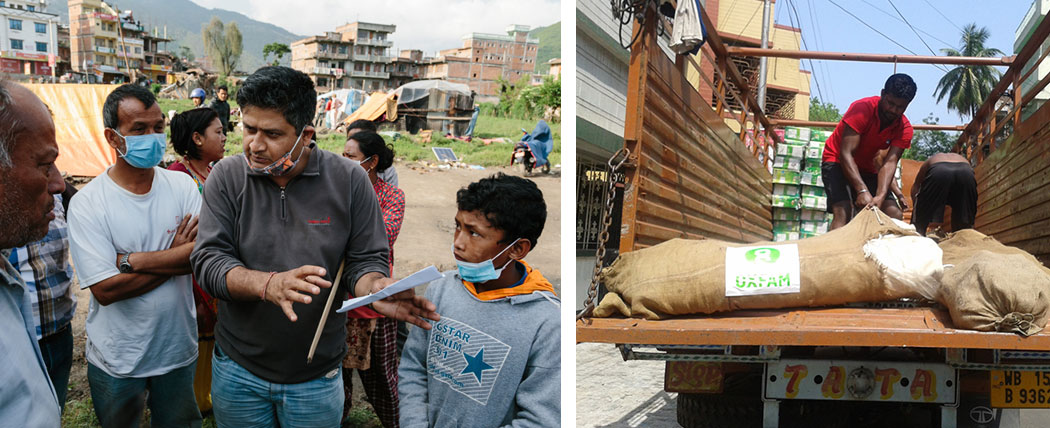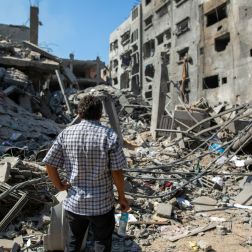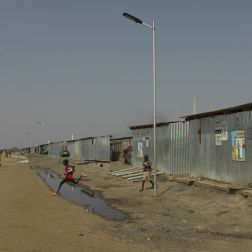- 3 mins read time
- Published: 7th May 2015
Nepal Earthquake: Your Support In Action
Nepal earthquake: Your impact
After the devastating earthquake in Nepal, we have touched by the generous support being shown by people across the island of Ireland.
Thanks to those donations, we are working in camps and in hard to reach rural areas to bring shelter, clean water, toilets and emergency supplies to the worst affected.
The UN estimates that 8 million people, more than a quarter of the population of Nepal, have been hit by the crisis. Tens of thousands of people have seen their homes flattened or damaged to such an extent that it is not safe for them to return.
We have been working in Nepal for years and aim to provide aid to at least 430,000 people.
It’s vital we get shelter, water and food to the huge numbers of vulnerable people like Kamala Maharjan in the hard-to-reach rural areas, as we step up our relief efforts.
Kamala, pictured in front of her collapsed house in Gamchha village in Kathmandu district (Photo: Prabin Man Singh/Oxfam), says: “I would have been killed if the earthquake had hit us at night. I was at the window of second storey of my house when the earthquake hit me and knocked down me together with the window to the ground.

Above: Kamala (top-left) and Oxfam staff in action in Nepal. Photos: Prabin Man Singh/Oxfam
“The quake took everything that we had. We have nothing to eat, no clothes to wear and no place to take shelter. I don’t know what to eat now, what to feed my family.
“Though we are safe, the trauma that we experienced haunts us every second. We are taking shelter under a tent nearby but hygiene and security are a major concern now.”
Here is a snapshot of our emergency response in Nepal so far:
Oxfam volunteer Shekhou Khadka (23) works to off-load latrines being delivered to the Tundikhel camp. He is one of 500 volunteers trained by us to react in the event of an earthquake, during an urban risk management programme.
"I'm sleeping under canvass outside our house but my family are safe,” he says. “I became a volunteer because I wanted to serve my community. The big challenges that lie ahead: supplying food, water, health care, and the scarcity of food."
Oxfam-trained technical volunteers erect a water tank. This T11 tank has a capacity of 11,000 litres of clean drinking water at the Tundikhel camp. They are assisted by volunteers from the Netherlands, tourists stranded after their flights were cancelled, and members of the Nepali armed forces.

Above: Oxfam staff and trained volunteers working to save lives in Nepal Photos: Aubrey Wade/Oxfam
Oxfam programme office Veejay Pant works with community members in Sankhu to identify suitable places to construct latrines (toilet facilities) and gain permission from the owners of the lands on which people have taken temporary shelter following the destruction of their homes. 980 houses collapsed in Sankhu when the earthquake struck. Photo: Aubrey Wade/Oxfam Oxfam India workers load trucks which will carry aid by land to remote villages in the Ghorka district of Nepal. Three trucks carrying tarpaulins, foam sheets, water containers, chlorine tablets and solar lamps have left Gorkhpur and another two have departed Kolkata with water filters and latrine construction materials. Photo: Oxfam India There was no water supply in the Tudhikhel camp when Ram Kesari arrived. Oxfam had constructed water tank in Tudhikhel camp site to supply water to over 5,000 people living in this camp. She had a lot of challenges ahead to regain her life before the earthquake. But with a supply of water means one immediate need has been met. Prabin Man Singh/Oxfam




